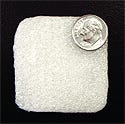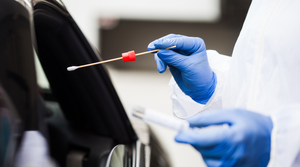Oxygenated Dressings May Speed Wound Healing
July 16, 2006
Originally Published MPMN July 2006
EMERGING TECHNOLOGIES
Oxygenated Dressings May Speed Wound Healing
|
Dressings deliver significant amounts of oxygen to the wound site. |
A new technology that delivers oxygen directly into wound sites may offer an alternative to hyberbaric oxygen chamber therapy.
Research has shown that an increase in dissolved oxygen in wounds is beneficial for promoting the closure of wounds such as diabetic foot ulcers. Until now, the only way to accomplish this has been through the use of hyperbaric oxygen chambers. Treatment with hyperbaric chambers involves spending hours in a pressurized chamber breathing oxygen-rich air. The therapy typically requires repeated sessions over a period of weeks or months.
This process can be costly and inconvenient, so other methods of topically delivering oxygen to wounds have been pursued. Most of them have relied on the topical administration of gaseous oxygen. However, gaseous oxygen cannot enter tissues until it first becomes dissolved oxygen.
New devices from AcryMed (Portland, OR; www.acrymed.com), called Oxygenesys TDO (topical dissolved oxygen), work by delivering dissolved oxygen directly into the wound through dressings. “Our research shows that these new devices deliver significant amounts of dissolved oxygen, which is the biologically relevant form,” says Bruce Gibbins, founder and chief technical office at the company.
“We conducted studies on human donor skin to show for the first time through Oxygenesys TDO, sufficient oxygen penetrates deep into tissues to make up for the oxygen deficiency that may be encountered in chronic wounds,” he continues. “The results show that this new technology delivers significant amounts of oxygen to the wound site and even permeates the skin tissue at a rate that is at least three times higher than the level delivered by blood. These lab findings were extended by wound-healing experiments in which [the company’s lead scientist] showed that wounds in animals healed faster with oxygenated dressings than with plain dressings. We are now eager to determine if this benefit occurs in patients.”
Gibbins says, “Our preliminary results are quite promising and by working directly with device manufacturers we expect to have a real solution of this kind on the market soon.”
Copyright ©2006 Medical Product Manufacturing News
You May Also Like



